Whether it is a human or animal, everyone has a skeleton to give it a desired shape and size. In the same way, the cars that we have in this world have a skeleton-like structure called chassis to give it strength and shape. In this article, we will take a look at what types of chassis and different types of cars in automobiles.
Have you ever noticed that:
- Why in the collision of a vehicle, like a small car which crushed fully but a truck or big car not crushed fully?
- Why do trucks or big cars vibrate more than small cars?
- What type of car do you have?
Whether you have an off-road ready automobiles or on road, every type is made up chassis, It is the most essential part of automobile without which the existence of vehicle is not possible. It is the type of chassis that decide the strength of vehicles.
Types of Chassis
You have heard the word “Chassis” many times in an automobile but till now you have confusion about it. But today I am going to tell you about it. Chassis is the base of a vehicle. It consists engine, the transmission system, brake system, suspension system, steering system, cooling system, wheels etc.
There are two types of chassis:
1. Conventional chassis or frame-full chassis
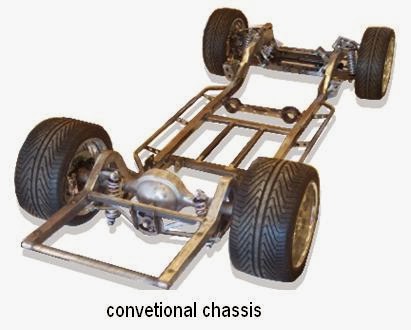
In this type of chassis the body is made as a separate unit and then joined with ladder frame. It supports all the systems in a vehicle such as an Engine, Transmission system, Steering system, Suspension system.
Advantage
- Higher load capacity and strength
Disadvantage
- The body tends to vibrate easily and the overall vehicle handling and refinement is lower.
It is used in trucks, bus and in SUV cars and in bigger vehicles.
2. Non-conventional or Frameless Chassis
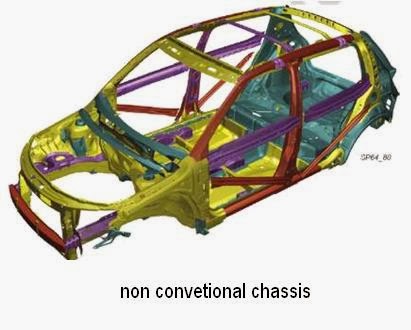
In this type of chassis, the ladder frame is absent and the body itself acts as the frame. It supports all the
systems in a vehicle such as the Engine, Transmission system, Steering system, Suspension system.
Advantage
- Less rattles and squeaks are developed.
- Handling is better due to the higher body rigidity and weight.
Disadvantage
- The load carrying capacity is lower.
- It is not safe in accidental condition.
Used mostly in hatchback and sedan cars.
Also Read:
- Different Types of Engine
- Top 5 Fastest Cars In The World
- What is Hydraulic Braking System and How It Works?
Different Types of Cars According to Body Style
The body of a car decides the space available for passengers and language in the car. There are various types of bodies used in the Indian market. And they are given below.
1. Hatchback
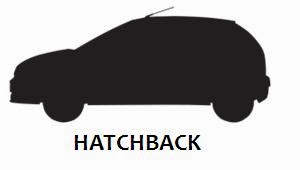
Hatchbacks are vehicles with a separate engine area, and passenger area (or two boxes), the luggage area is enclosed with the passenger area behind the rear seats. Example: Nano, Indica, Jazz, Punto etc.
2. Sedan/Notchback
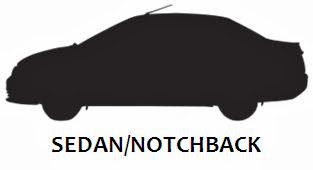
Sedan are basically vehicles with an engine area, passenger area, and boot area (or three box), all separate. Example: Indigo Manza, Swift Dzire etc.
3. Estate/Station Wagon
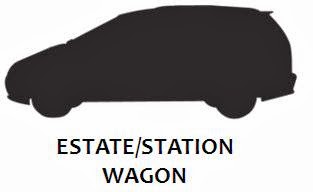
Estates or Station wagons are modified saloon vehicles by combining the boot with passenger area & extending it till the roof. The boot area is significantly larger and does not have third row seating. This makes it convenient to carry big objects. Example: Indigo Marina, Octavia Combi etc.
4. Multi Purpose Vehicle (MPV) / Multi Utility Vehicle (MUV)
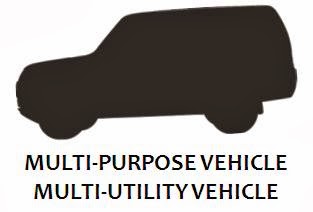
MPV (Multi-Purpose Vehicles) or MUV (Multi Utility Vehicles) can have the engine, passenger area and boot area enclosed together or they can have the engine area separate and the passenger and boot area enclosed. MUV/MPV can also have third row of seating. These vehicles are two wheel drive.
Example: Sumo Grande, Tata Tavera, Tata Innova etc.
5. Sport Utility Vehicle (SUV)
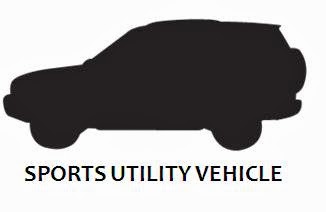
These vehicle have large tyres, higher seating, higher ground clearance. The engine area is separate and the passenger and boot area are enclosed together. These vehicles are either equipped with 4 wheel drive or has as an option of 4 wheel drive.
Example: Safari, Scorpio, Gypsy, Fortuner.
6. Pick-Up Truck
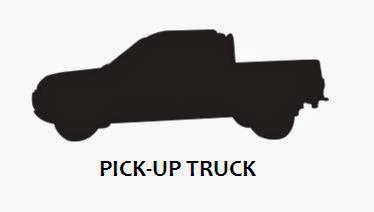
These vehicles have large tires, higher seating capacity, higher ground clearance. The engine area is separate and the passenger compartment available in single or double cab configurations. Also, the luggage loading bay is available behind the passenger compartment. These vehicles are either equipped with 4 wheel drive or has as an option of 4 wheel drive.
Example: Xenon, Scorpio Getaway etc.
7. Van

The engine is placed below the passenger area. Vans can also have Third row of seating. They are also taller and generally more spacious.
Example: Winger, Ace Magic, Omni etc.
Now, I hope that you understood what is chassis and which type of car you have. If you found this piece of information useful and valuable then don’t forget to like and share it.

